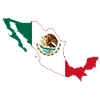
Cross-border e-commerce is gathering growing momentum – as customers look beyond the limits of their own countries for the best deals and widest range of products.
Over the past couple of years we’ve seen some interesting new concepts appear in the world of e-commerce. First came ‘distributed’ e-commerce: the appearance of ‘buy’ buttons in social networks like Twitter and Pinterest. Then, last year, Uber’s Chris Messina coined the term ‘conversational commerce’ – for the emerging idea of buying via popular messaging apps like WhatsApp.
But interesting as these innovations are, they’re small fry in comparison to another development that’s begun to pick up speed over the same period of time.
So, what is cross-border e-commerce?
It’s really as simple as it sounds. Where most e-commerce sales currently take place within the bounds of a single country, cross-border e-commerce sees products being offered to buyers who might be anywhere. This could mean brands or retailers selling to individuals (so-called ‘B2C’), businesses selling to each other (‘B2B’), or, indeed, transactions taking place directly between consumers, via marketplaces like Amazon and eBay (‘C2C’).
What are the challenges?
With many commercial opportunities of cross-border selling, one might well wonder why everyone hasn’t been doing it all along. But while we’re certainly not here to throw a dampener on the idea, it’s important to be aware of the potential stumbling blocks that can lie along the way:

Fraud is, without a doubt, the biggest challenge faced by traders who wish to sell to customers from outside their own country. A robust choice of payment system and accurate local knowledge are absolutely vital in addressing this perennial threat.

Logistics – sending out orders and facilitating returns – is an equally important challenge. Getting this wrong will adversely affect how your business is perceived by those very overseas customers you’re hoping to impress – so finding reliable partners and putting in place a coherent strategy is essential from the word ‘go’.

How big is the opportunity?
We’ve put the potential hardships of cross-border trading on the table for you to see – so, do the opportunities it presents make these challenges worth facing?
In a word: Yes. Accenture, a leading consultancy, estimates that by 2020, 2 billion consumers around the world will be carrying out 13.5% of their transactions online. While this may sound fairly modest to western consumers already accustomed to buying everything from milk to furniture via Amazon, it represents a shift to online shopping in markets where until recently it had achieved little penetration. The headline figure? A total market value projected to reach $3.4 trillion in three years from now.
So, whether your business is based in a strong but slowing developed market, or in a territory where the domestic e-commerce market is still in its infancy, the case for looking beyond your own borders is compelling.
Where are the biggest opportunities?

China’s cross-border e-commerce market is worth about $60 billion, but controls put in place by the country’s government do complicate the picture for those looking to take a piece of this enormous pie. Chinese consumers are relatively old hands at looking overseas for products – from cosmetics to cognac – that are expensive or limited in availability at home. But pressure from conventional domestic retailers, along with loss of tax revenue, could soon push authorities into clamping down – a risk for those considering investing in the country.

South-East Asia contains 600 million consumers, 260 million of whom are online – making it one of the largest markets in the world for online sales. By 2025, the e-commerce market here will be worth $200 billion, powered by an annual growth rate topping 32%.

Australians love buying clothes from e-commerce sites around the world – and this has helped bring the country into global second place for sales from cross-border retailers. What’s more, it’s a market that’s projected to grow by around 50% between now and 2020, making it well worth the while of retailers and marketplaces around the world to address the challenges of fulfilling orders to this relatively isolated continent.

In France, cross-border shopping is the fastest growing e-commerce segment. Nearly half of French consumers regularly buy from merchants overseas, and 19% of all online sales in 2016 were made on non-domestic websites (that’s four points higher than the European average of 15%). At present, most of that trade goes to Germany, the UK, Belgium, the US and China – but the opportunity is there for businesses around the world to take a piece of this market. One slight downside – for now, French consumers still tend to make relatively small transactions, compared to their international peers.

Though for now not one of the largest markets, Mexico is an important one to keep an eye on in the medium-term, thanks to very speedy growth (currently running at 21%). This is a market where payment security presents a big challenge: Amazon partners with a local retailer in Mexico to enable customers to pay for orders in cash. There are relatively few strong players here at present, but it could in the long run become the largest e-commerce market in Latin America.
Where do we go from here?
We wouldn’t be doing our job if we didn’t reiterate the technical, legal, and commercial challenges of cross-border e-commerce. Secure payment systems must be established. Local taxes and customs charges must be understood and accounted for, so that customers are not surprised by additional costs slapped onto their orders at the border – or, worse, by not receiving their orders at all.
But if you’re prepared to build an understanding of these challenges, the opportunities are plain: even if your business is located in a large market, the rest of the world is a much larger market still. Accessing and harnessing that market will require discipline and organization – but the rewards could be very great indeed, and have the potential ability to elevate your business to an entirely new level.
Recommended articles
 The Most Important Website Problems Which Reduce Your Sales
The Most Important Website Problems Which Reduce Your SalesIf your sales are stagnating, your website might be the culprit. In this article, we cover the most critical website issues that can drive customers away and give you actionable tips to optimize your site for better conversions and sales growth.
 CS-Cart Multi-Vendor: Turn Your Online Store into a Marketplace and Push Your Business Forward
CS-Cart Multi-Vendor: Turn Your Online Store into a Marketplace and Push Your Business ForwardThe e-commerce market is constantly evolving — here, if you want to be successful, you need to move fast. If you want to turn your competitors into partners and make them work for you, read our article on how to boost your business and your profits by turning your online store into a multi-vendor marketplace.
 Discover the Most Popular Online Marketplaces with Our Infographic
Discover the Most Popular Online Marketplaces with Our InfographicWith the rise of e-commerce, online marketplaces have become a vital part of the retail industry. In this infographic, we will explore the top online marketplaces, their features and benefits.
 Building A Transaction Workflow – Cases For Service Marketplaces
Building A Transaction Workflow – Cases For Service MarketplacesAre you looking to take your platform to the next level? Look no further - building a transaction workflow is the key to success. By implementing payment processing, automated features, and customized solutions, you can greatly improve user satisfaction and platform efficiency.






